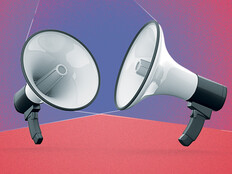At the same time, the current environment has increased the visibility of automation, as people had to respond at a very rapid pace to things that were completely unanticipated. That’s tailor-made for intelligent automation, especially when they’re cloud-based. For example, companies that had to respond to spikes in activity to call centers. There’s no way you can scale a human workforce in the amount of time that, say, a bank needed to respond during the pandemic when it was also involved in processing Paycheck Protection Program loans.
So that’s a situation where you say, “Let’s get some help with digital workers on a cloud infrastructure that we can spin up in a matter of hours if need be,” at a pace that you couldn’t even touch with human workers. Who would have thought a bank would have to triple its call center workers or its loan processors overnight?
BIZTECH: Is automation still a better fit for enterprise businesses, or is there an opportunity for midsized and even smaller companies?
The massive digital workforce deployments are being seen at the large banks, the large life sciences companies and other enterprise companies. However, that doesn’t mean they’re the only ones suited for this. It’s really not just for the large. Even for the very small, though a full-scale cloud-based infrastructure that they host and deploy themselves might not be the solution for them, a more contained model might be right. Who is it suited for? Gosh, anyone with a significant volume of repeatable tasks, or where we can replicate human judgment with algorithms to process a task.
Early adoption came through large banks because they were prepared well for it, but now we see organizations of all sizes and in every industry gravitating toward tech-enabled process transformation.
MORE FROM BIZTECH: More businesses are using artificial intelligence to drive user experiences.
BIZTECH: What do you think the ideal organization transformed by intelligent automation looks like?
Several things characterize such an organization. There’s greater job satisfaction among employees, because the human workers are valued for the things that are uniquely human — for greater, more complex and challenging tasks. The organization can respond with agility to changing environments because it has the ability to apply this technology at great speed and efficiency. It has a competitive advantage because it has better data, faster processes, deeper insights and greater customer and employee satisfaction.
BIZTECH: In your survey, you note that many companies are still in the piloting stage of automation deployment. What’s the long-term potential for those organizations with this technology?
It’s a lifecycle. Those piloting companies are the ones that have gone out and grabbed the low-hanging fruit. It’s super easy. You can automate anything; you can trip over automation opportunities. At first, that’s how folks approach it, without always taking note of the full ROI. So, yes, there are basic automations you can do and have great returns.
Those are characteristics of companies in the early stages. But as our survey said, organizations that are able to reimagine business processes are twice as likely to scale. That really gets you into the next layer of opportunities. There’s the low-hanging fruit, and then there’s that set of stuff where you can tweak a business process and look to move some things around and you’re able to automate with some process re-engineering. Then, there’s the end of the spectrum, where you really scale.
For example, we’re helping a travel and hospitality organization figure out how to optimize its labor deployment in the current environment, using automation capability. The company is globally fragmented, which is the biggest obstacle to automation. And it’s looking at, “OK, can we standardize our business processes globally so we can better automate what we do?” So that’s the spectrum, and organizations that have scaled lean into that end of the spectrum.













